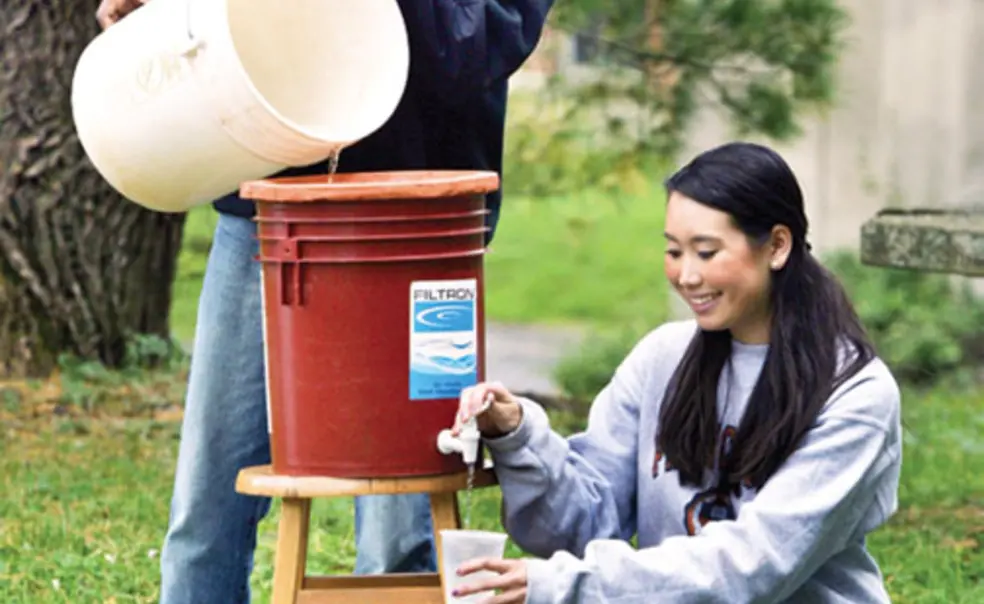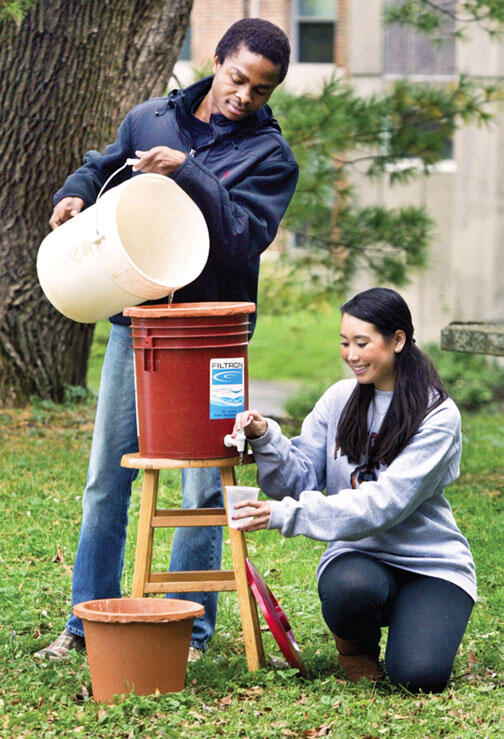New Approaches to Engineering
The Alumni Weekly provides these pages to the president
Princeton has long held that the study of engineering should be firmly embedded in a liberal education and that prospective engineers should have broad exposure to the humanities and social science disciplines before they graduate. Conversely, in recent years, the University has made a concerted effort to increase the technological literacy of non-engineers, not least through the work of the Keller Center, which was established, in part, with the goal of teaching such students “about concepts in engineering and science and instilling in them a solid understanding of technology and how it affects the world.” At Princeton, we expect our undergraduates to think deeply, but we also want them to roam widely, exploring a broad range of questions and approaching them from as many angles as possible.
This cross-pollination has been facilitated not only by our relatively small size and single faculty but also by farreaching changes in how Princeton — and academia as a whole — pursues the discovery and dissemination of knowledge. Although our basic organizing principle remains the academic department, be it English, chemistry, or politics, teaching and research are no longer coterminous with individual disciplines. For all their value in grounding students in specific ways of thinking, these fields — once largely self-contained — have developed highly porous borders. And nowhere is this more apparent than in our School of Engineering and Applied Science.
Indeed, were we to establish a school of this kind today, I doubt we would recreate its six departments, whose lengthening names attest to the widening scope of their activities. The Department of Chemical Engineering, for example, became the Department of Chemical and Biological Engineering in 2010, much as civil engineering added “environmental” to its title and mechanical engineering added “aerospace” in previous years. The convergence of biology and engineering reflects significant changes in both disciplines, be it the introduction of high-throughput computation in the former or the development of organic electronics in the latter, but this “meeting of minds” is by no means unique. Throughout the Engineering Quadrangle and across the University, our faculty and students are working at the intersection of many fields, often under the aegis of joint appointments or interdisciplinary certificate programs. In the words of Dean Vince Poor *77, “The most inventive and effective solutions often come from unexpected interactions between disciplines.”
Today, the engineering school is more likely to frame its work in terms of four broad areas of social need — energy, the environment, health, and security — than to define its mission using departmental metrics. While its departments continue to provide our faculty and students with an intellectual and administrative home, they are less a retreat than a jumping off point — one that leads to some of the most exciting courses and research projects on our campus. To give you just a taste, Professor of Chemical and Biological Engineering Bruce Koel has brought his expertise in surface chemistry to the Princeton Plasma Physics Laboratory, where he and his colleagues are endeavoring to develop a reactor lining that will sustain the super-high temperatures required by the fusion process and the clean and abundant energy it promises. Molecular biology major Shivani Sud ’12 has been working with Professor of Mechanical and Aerospace Engineering Wole Soboyejo to develop a simple screening system for cervical cancer with the goal of improving detection in developing countries. And this spring, a record number of students enrolled in Technology and Society, a course jointly developed by Professor of Electrical Engineering Sharad Malik and professors of history Michael Gordin and Angela Creager and Associate Professor of Sociology and Public Affairs Betsy Armstrong *93. In this class, engineers have an opportunity to weigh the social implications of their disciplines, while non-engineers can develop a fuller appreciation of technology’s power and limitations — from nuclear energy to genetically modified organisms to Internet regulation.
To nurture such ventures, the school has created six major interdisciplinary centers in addition to the Keller Center: the Andlinger Center for Energy and the Environment, the Center for Information Technology Policy, the Combustion Energy Frontier Research Center, the Gigascale Systems Research Center, Mid-Infrared Technologies for Health and the Environment, and the Princeton Institute for the Science and Technology of Materials. Their creation reflects the complexity of the challenges our faculty and students are addressing — challenges that can only be successfully confronted on a collaborative basis. One of the biggest, of course, is developing sustainable energy sources and uses that both meet the world’s requirements for economic growth and preserve our fragile global ecosystem. I am happy to report that some 90 members of our faculty, including representatives of all six engineering departments, are working on this monumental problem under the umbrella of the Andlinger Center. Similarly, the Center for Information Technology Policy has brought together some of the best minds in the engineering and Woodrow Wilson schools to further research on and find practical solutions to a host of critical concerns relating to everything from electronic voting machines to technology-informed government transparency to the relationship between digital technology and social inequality.
And this, I predict, is just the beginning of the blurring of disciplinary boundaries, both inside and outside the engineering school.














No responses yet